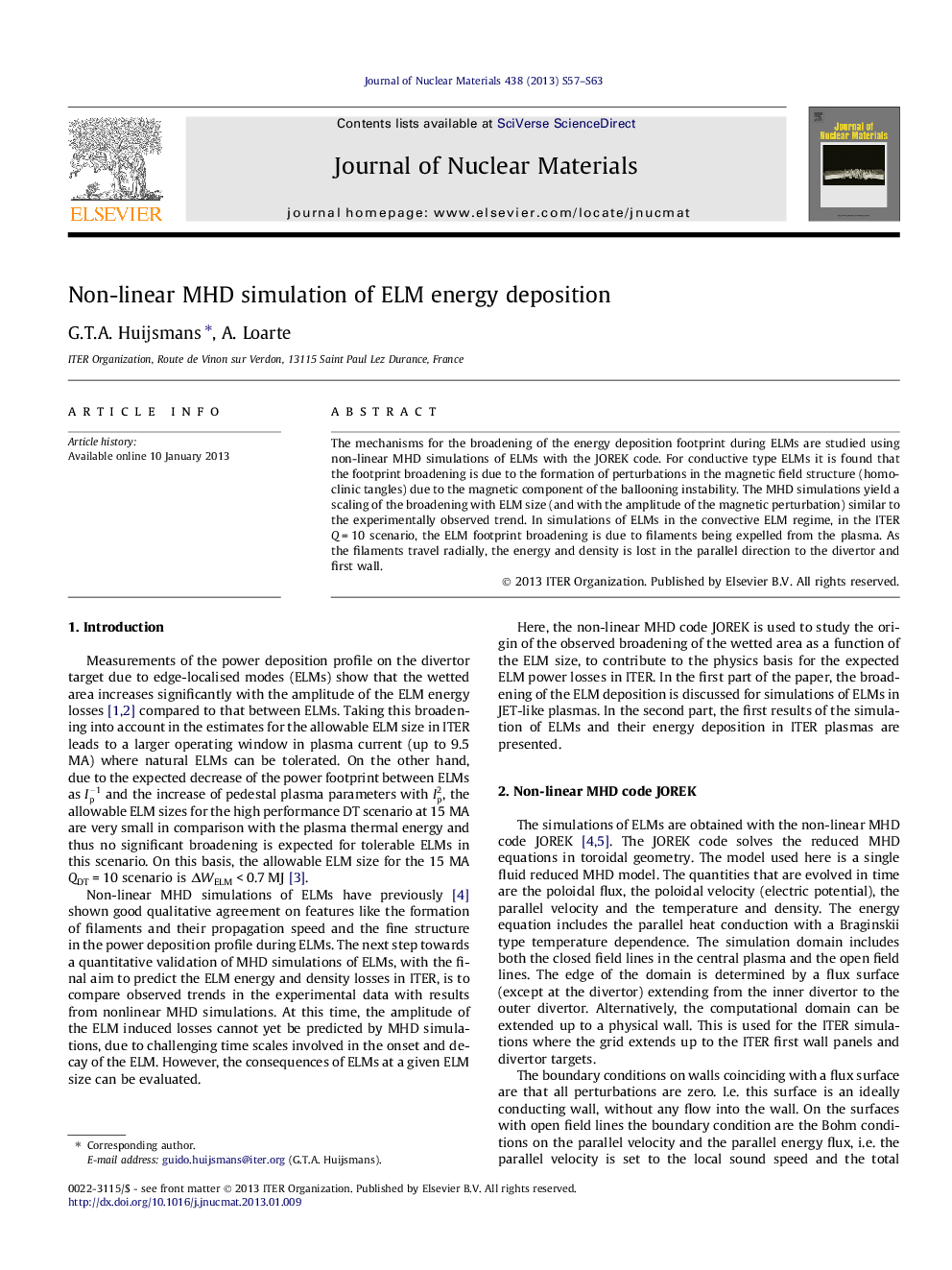| Article ID | Journal | Published Year | Pages | File Type |
|---|---|---|---|---|
| 10644950 | Journal of Nuclear Materials | 2013 | 7 Pages |
Abstract
The mechanisms for the broadening of the energy deposition footprint during ELMs are studied using non-linear MHD simulations of ELMs with the JOREK code. For conductive type ELMs it is found that the footprint broadening is due to the formation of perturbations in the magnetic field structure (homoclinic tangles) due to the magnetic component of the ballooning instability. The MHD simulations yield a scaling of the broadening with ELM size (and with the amplitude of the magnetic perturbation) similar to the experimentally observed trend. In simulations of ELMs in the convective ELM regime, in the ITER QÂ =Â 10 scenario, the ELM footprint broadening is due to filaments being expelled from the plasma. As the filaments travel radially, the energy and density is lost in the parallel direction to the divertor and first wall.
Related Topics
Physical Sciences and Engineering
Energy
Nuclear Energy and Engineering
Authors
G.T.A. Huijsmans, A. Loarte,
